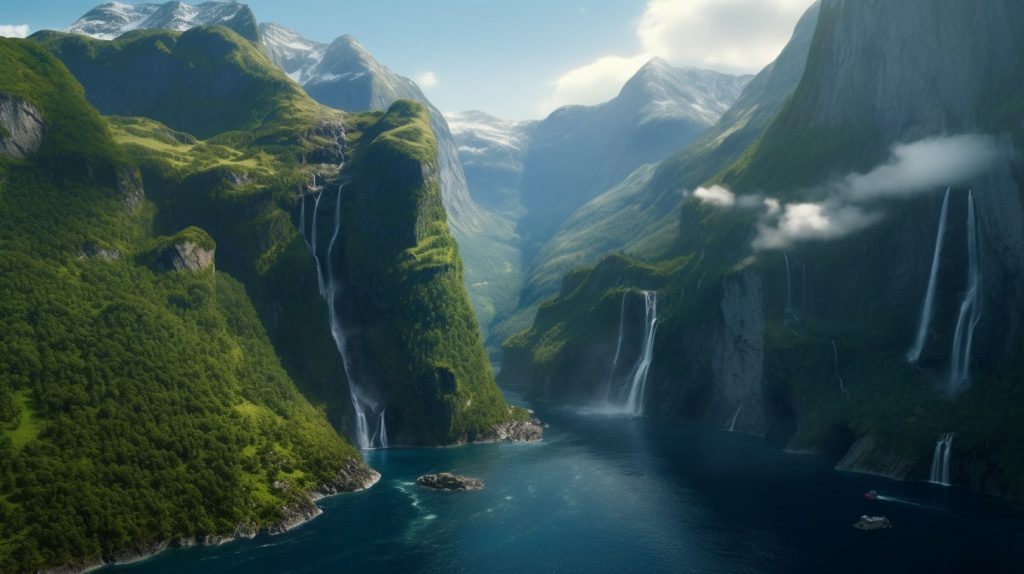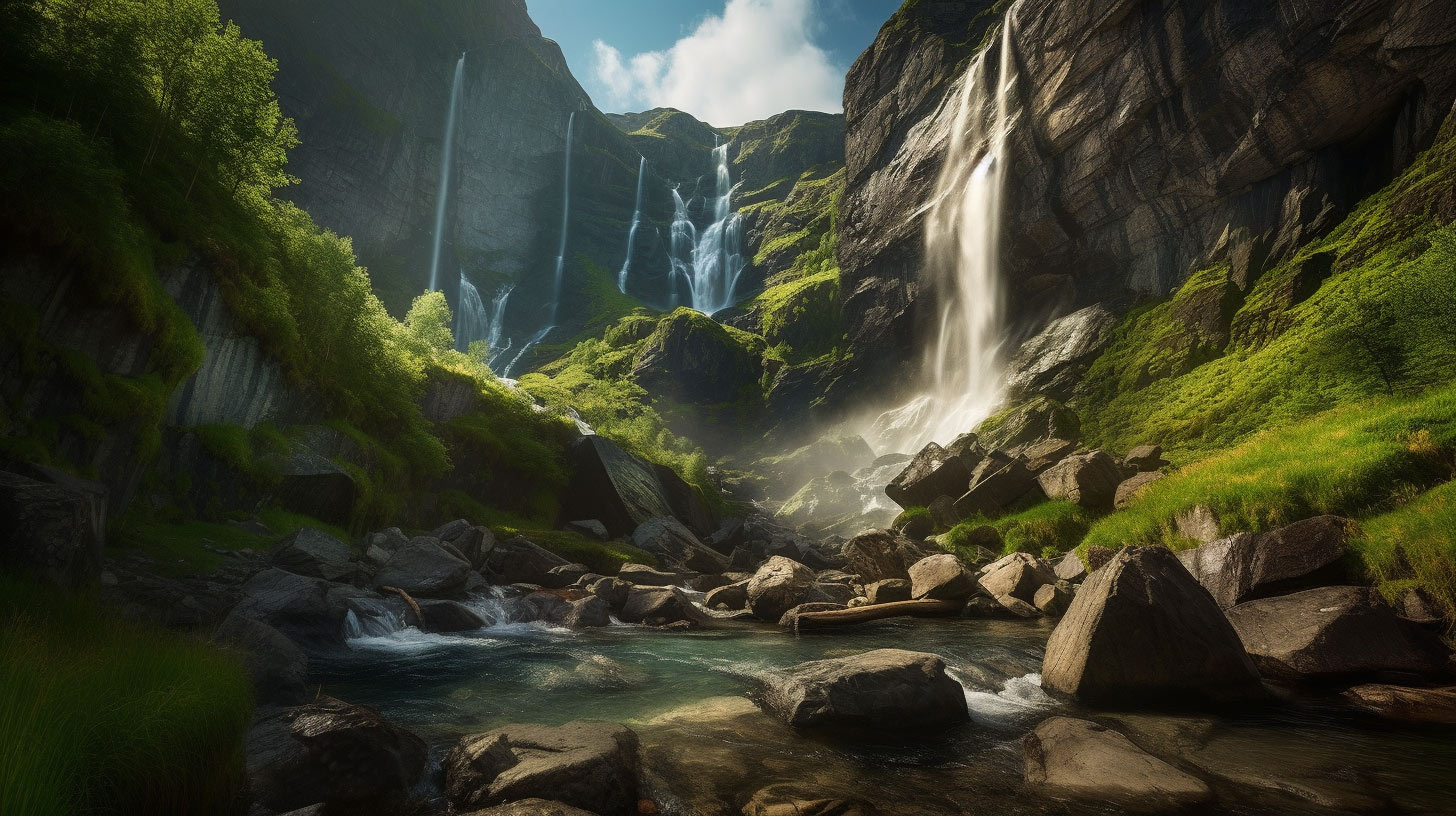When the summer season beckons, the allure of breathtaking landscapes, vibrant cultures, and unforgettable experiences takes many travelers on a quest to explore the world. Two destinations that often find themselves in the spotlight are Norway and Iceland. Both countries offer a unique blend of natural beauty and cultural charm. In this article, we’ll dive deep into the attributes of Norway and Iceland, helping you make an informed decision for your summer adventure.
Landscape Marvels and Cultural Encounters
Norway’s fjords are famous worldwide, with dramatic cliffs plunging into serene waters. The lush greenery and crystal-clear lakes create a picturesque paradise for hikers and nature enthusiasts. On the other hand, Iceland boasts otherworldly geothermal wonders like geysers, hot springs, and volcanic landscapes. Which one offers the more awe-inspiring natural scenery for your summer escape?
Norway’s historical cities, such as Oslo and Bergen, are known for their captivating museums, architecture, and vibrant art scenes. Meanwhile, Iceland’s smaller towns and villages exude a sense of rustic charm, strongly emphasizing folklore and storytelling.
Outdoor Adventures and Culinary Delights
In Norway, the midnight sun creates an ethereal ambiance, allowing for extended outdoor adventures like hiking, fishing, and even golfing in the wee hours. Iceland, with its almost endless daylight during summer, provides ample time for exploring glaciers, embarking on whale-watching tours, and indulging in thrilling activities.
Norwegian cuisine showcases a solid connection to the sea, with abundant fresh seafood like salmon and cod. Local delicacies like “rakfisk” add a unique touch to the culinary journey. Meanwhile, Iceland boasts dishes like “hákarl” (fermented shark) and “skyr” (a yogurt-like dairy product). Which country’s gastronomic offerings will tantalize your taste buds and create a memorable culinary experience?
Which country’s weather is better?
Norway experiences relatively mild and pleasant weather during the summer months, which typically span from June to August. In coastal areas and cities like Oslo and Bergen, temperatures can range from 15°C to 25°C (59°F to 77°F). The weather is generally characterized by longer daylight hours, making it ideal for exploring the outdoors, hiking, and enjoying cultural attractions. Norway’s coastal regions benefit from the warming influence of the Gulf Stream, creating more temperate conditions.
Iceland’s summer weather is also relatively mild, considering its northern location. The summer months, particularly June and July, see average temperatures ranging from 10 to 15°C. One unique aspect of Iceland’s summer is the almost endless daylight due to its high latitude. This extended daylight period allows for longer exploration hours and outdoor activities.
Which one is costlier?
Hotels and accommodations in Norway, especially in popular tourist areas, can be pricey. Budget travelers might consider staying in hostels or seeking alternative accommodations. Eating out in restaurants can be expensive, with even casual dining options costing more than in many other countries. Consider trying local markets and food trucks or preparing meals to save money. Public transportation is efficient but can be costly. Train and bus fares can add up, especially for longer journeys. Renting a car can also be expensive due to fuel costs and tolls. Excursions, guided tours, and entrance fees to attractions can contribute to your overall expenses. Activities such as fjord cruises or visiting museums may have higher price tags.
Similar to Norway, accommodation costs can be high in Iceland. Options like guesthouses and hostels might offer more budget-friendly choices. Restaurant and food expenses can be pricey in Iceland. Opting for local eateries, food markets, and grocery stores can help you manage your dining costs. Public transportation in Iceland is limited, and car renting is a popular choice. Car rental costs, fuel, and potential road-related fees can contribute to your expenses. Iceland’s unique attractions, such as geothermal spas and glacier tours, can be expensive. Budgeting for these experiences is essential if they’re part of your travel plans.
Is it possible to see the Midnight Sun in Norway and Iceland during the summer?
The Midnight Sun occurs when the sun remains visible above the horizon continuously, creating a prolonged daylight period, particularly around the polar regions. In Norway, regions above the Arctic Circle, such as Tromsø and Hammerfest, offer the opportunity to witness the Midnight Sun. This phenomenon occurs from late May to mid-July, with June being the prime month for experiencing the most prolonged daylight hours. Travelers to these northern areas can enjoy activities and explore the stunning landscapes even during the late-night hours.
Similarly, Iceland’s high latitude makes it another prime location for observing the Midnight Sun. From mid-May to early August, visitors to Iceland can experience nearly 24 hours of daylight, particularly in the northern and western parts of the country. Reykjavik and Akureyri are popular spots for taking advantage of extended daylight, allowing travelers to maximize their outdoor adventures and exploration.

Is it possible to see Aurora Borealis in these countries?
Norway, particularly its northern regions, is a popular destination for witnessing the Northern Lights. Towns such as Tromsø and Alta offer excellent opportunities to see this natural phenomenon. The best time to see the Northern Lights in Norway is during the winter months, from September to April when the nights are the longest and the skies are the darkest. This means that if you’re visiting during the summer months when the Midnight Sun occurs, you won’t be able to see the Northern Lights as the skies remain bright during the night. The best time to see the Northern Lights in Iceland is also during winter, from September to April. Similar to Norway, the Northern Lights are not visible during the summer months due to the extended daylight hours caused by the Midnight Sun.
Conclusion
As you embark on choosing between Norway and Iceland for your summer adventure, remember that both countries have unique charms and attractions. Whether you’re drawn to Norway’s fjords, Iceland’s geothermal wonders, the cultural riches of each destination, or the practical aspects of travel, your choice ultimately hinges on your preferences. Evaluate what aspects resonate with your travel desires, and be prepared for an unforgettable summer experience no matter which path you choose.
When planning your summer getaway, accessibility and ease of travel are crucial factors. Norway’s well-connected cities and efficient public transportation systems make it a breeze to navigate the country. On the other hand, Iceland’s smaller size fosters an intimate atmosphere that allows travelers to immerse themselves in the local culture.
FAQ
Which one is more budget-friendly, Norway or Iceland?
While both countries are known for their relatively high cost of living, Iceland tends to be slightly more expensive due to its isolated location and limited resources. Norway’s well-established infrastructure might offer more budget-friendly options for accommodation and transportation.
Are there any language barriers for English-speaking travelers?
English is widely spoken in Norway and Iceland, particularly in tourist hubs. Travelers will generally find it easy to communicate and navigate without significant language barriers at either destination.
Which destination offers more diverse wildlife experiences?
Iceland is known for its diverse marine life, including opportunities for whale-watching and bird-watching. Its oceans teem with species like whales, puffins, and seals. Norway’s fjords and mountains offer glimpses of land-based wildlife, including reindeer and arctic foxes. If you’re interested in marine life, Iceland might be your preference, while Norway’s land-based wildlife may intrigue you.


1 Comment